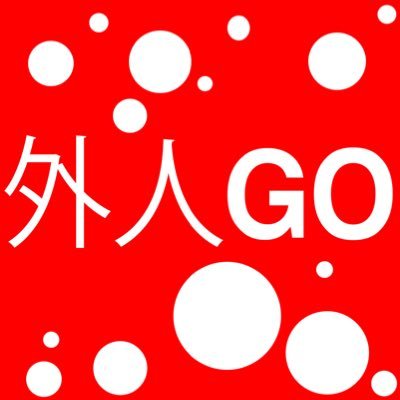Earlier today, Martin aka Gaijin Otousan asked these questions to the world:
🇯🇵👨🏽🚀 • Katakana – Kanji – Hiragana • Can someone please help me understand? 👨🏽🚀🇯🇵 pic.twitter.com/PVbT7VNXvS
— Gaijin Otousan (@Gaijinotousan) February 13, 2023
I liked those questions, and I’m going to try to answer them to the best of my knowledge.
A small caveat: my knowledge of the Japanese language might be embarrassing after such a long time in Japan, but I believe that my knowledge ABOUT the Japanese language is not that bad, nor is my knowledge of linguistics in general (my too many years in graduate school must be useful for something, right?). So while my answers will be lacking details, I believe that their gist may be satisfactory. You tell me.
If you find my answers too straightforward at times, remember that the questions originate from a self-described straightforward New Yorker and I am myself a self-described straightforward Frenchman. So… Well, you’ve been warned.
First of all, I want to underline that asking “why” a language is like this or like that is always a tricky question.
The truth is that most of the time, there is no real “why” beyond a simple force of habit. And when there are reasons, they rarely are of a linguistic nature. That’s actually one of the things I find fascinating about languages, their respective history, and how they work. Most of the reasons why a language is a certain way often have to do with historical, political, or even practical reasons. They rarely are of a purely linguistic nature.
Also, very often the “best” but frustrating answer to a “why is a given language this way?” question is… “why not?”
So, with all of that being said, let’s start with the first question:
Why is the Japanese language still using kanji?
For starters, if you know nothing about the Japanese language, know that kanji are characters that are similar to the Chinese language. They are logograms, not phonograms. This means that one character has one meaning (sometimes more) and no unique pronunciation. On the other hand, the Roman alphabet, aka the letters you know and that I’m using to type this text are phonograms, each letter carrying a sound but not having any meaning. The meaning comes from assembling the letters together into words.
To answer the question, I think that the trick here is the “still” part.
As Westerners, we are used to a much simpler writing system, and we can’t help but find kanji to be overly complicated and somewhat outdated. But what about from a Japanese perspective? Is this system really complicated and outdated? Sure, learning most kanji takes years of memorization and practice, but when it’s your own native language, is it that different from learning spelling, grammar rules, and such? It’s true that native speakers of English have it easy here compared to a lot of other common languages. English spelling is relatively simple. Its grammar is so simple that it’s possible to learn English without consciously learning the grammar. Actually, I believe that few native speakers of English ever learn the grammar of their native tongue. I’ve always found that fact mindblowing personally. To give you a point of comparison, if you take my own native language, while not that different from English, I’m not sure one can call themselves literate in French if they don’t know the grammar in and out. But English has its complicated points too. Its lexicon is probably the largest in the world, with so many synonyms. It takes years to learn enough vocabulary, probably even for native speakers. Is there a living person who can say that they know the entire English lexicon? I doubt it. I could be wrong, but I’m tempted to say that there are more than a few Japanese people who know all kanji. In any case, most Japanese people know most kanji Do most English speakers know most English words?
My point here is that all languages have their over-complicated parts. Native speakers take them for granted whereas, more often than not, learners of the language get grey hair studying them.
So is the kanji system complicated? Yes, it is. Is it too complicated? Most likely not, or else, I’m pretty certain that the Japanese would have eventually stopped using it or at least simplify it. Actually, there is one time in Japanese history when kanji were seen as over-complicated and inconvenient. It was shortly after their introduction to Japan! The kanji system was great and all (Japanese was not a written language before kanji were imported to Japan in the 4th or 5th Century) except for one thing: kanji didn’t work to transcribe some parts of the language (mostly its purely grammatical parts). And that’s the reason why kana (hiragana and katakana) were invented. If you don’t know Japanese, hiragana and katakana are two sets of “alphabets” (not exactly alphabets as they’re syllabaries) that are phonograms and are used for all sorts of things (more about some of those things later in this text) including for parts of the written language that are purely grammatical and for which kanji is not exactly the best tool.
For centuries, the kanji + kana system has worked well and there has been no reason to change it. The only reason is recent and is… foreigners… During the Meiji Era, during Japan’s modernization and opening to the world, there actually were talks about dropping the kanji + kana writing system and replacing it with the Roman alphabet. I guess that those talks met enough resistance that the change never came to pass. The force of habit, probably? There are probably more reasons that I have forgotten, they must be out there on the web.
Also, I could be wrong, but I can’t help comparing the situation with the one in Vietnam.
Vietnam used to have kanji (well, sinograms) and, unlike Japan, the system was eventually dropped for the Roman alphabet. There are two major differences with Japan, though.
First, while the romanization of the Vietnamese language was invented by Portuguese missionaries in the 17th Century, it wasn’t really adopted for widespread use until the French colonization of the country in the 19th Century (roughly at the same time as the Meiji Period). The thing is that as the country had become a colony, it wasn’t left with much choice about this change. Also, imposing the system was made easier by a few factors. While they’d been in Vietnam for centuries, sinograms were never really perceived as part of the Vietnamese language (as opposed to kanji being fully integrated into the Japanese language). Especially because most of the Vietnamese population was illiterate and sinograms were only used by the elite (not too dissimilarly from Latin in Europe a while ago). The use of the Roman alphabet helped with educating the Vietnamese population and make it literate. There are many factors at play, but I don’t think the country could have gone from a 10% literacy rate to a 98% rate in less than a century if it had stuck with using sinograms only. I could be wrong and my only source about this is a few Vietnamese people I have talked with. So take this with a grain of salt.
Why didn’t something similar happen with Japan during the same period? Well, Japan in the second half of the 19th Century was a very different country from Vietnam. First and foremost, it never was colonized. The West had no power to force Japan into changing its writing system. Let’s not forget that almost all the non-European countries who use the Roman alphabet in their language do it because they were colonies of a Western European nation at some point in their history. Well, even a lot of the European countries who use it do it because they were colonized by Rome. Japan never was forced to use the Roman alphabet, so it simply never did it. And while Emperor Meiji seriously westernized Japan, he hasn’t deemed it necessary to westernize the writing system.
Why not? I’m not sure, but it must be noted that Japan was, even back then, one of the most literate countries in the world (probably and ironically thanks to its dual writing system, both phonetic and logographic). In the mid-19th Century, the literacy rate was higher than in most European countries. So changing the writing system wouldn’t have done anything in terms of literacy, and it was probably seen as pointless. For all I know, Japanese people may have seen (and may still see?) their writing system as more convenient and more developed than a simple phonological alphabet.
The only thing that resembles a colonization of Japan is its occupation by US forces after World War Two, but it was not a real colonization and the US had limited power (and intent) on what it could change if anything. Not to mention the lack of settlers. Still, this is when most road signs and a lot of official signs became bilingual in Japanese & English. When you think about it, there aren’t many countries that have bilingual road signs with one of the languages being a language foreign to the country and its population.
So basically, the kanji system was never scrapped (and is unlikely to be scrapped in the foreseeable future) because Japanese people have no reason to do it. It’s an inconvenient system for foreigners, but not for the Japanese. And so be it if foreigners have trouble with it. Actually, it’s possible that the postwar creation of signs in two languages may have reinforced the idea that Japan should use more scripts to make itself more accessible, not fewer.
So “why bother with kanji?”
Well, we “bother” with kanji, and they bother us, but they don’t bother Japanese native speakers. It’s not bothersome for them. It’s just “the way it is.” My kids even kinda enjoy their kanji homework. I definitely see how it can be something enjoyable to learn under certain circumstances – including “being a child”.
I’ll finish this part with this. We unconsciously see our respective native languages as “normal” and we tend to see any other language that deviates too much from that “norm” as weird and unfathomable (yes, after more than a decade in Japan, while kanji are not weird anymore, they mostly remain unfathomable to me), but that’s all arbitrary and subjective.
Once again, I’ll take the issue from another perspective and one could ask why the English language insists on using the Roman alphabet when it’s clearly not that appropriate to transcribe the language. For example, the ‘th’ sound clearly needs its own character (Old English had one: ‘þ’), and every vowel in English has two or three different pronunciations. There are more (maybe for another day. In a sense, Old English’s writing system was much better for the language, even in its contemporary form (there even was a character for ‘th’ back then; ‘þ’). And yet, English is written with the Roman alphabet, not for linguistic or phonetic reasons, but historical ones: the Roman Empire first, and the predominance of the Latin language as the language of education, religion, and more for centuries and centuries (that predominance is still around if you pay attention, just look at scientific terms in biology and such). Then the predominance of the French language among the English elites during most of the Middle Ages finished sealing the deal and making sure that the language would be written that way and not another one for the centuries to come.
Why do Japanese people use both katakana and hiragana? Having two phonetic scripts is pretty redundant, isn’t it?
Once again, it’s not about logic, although there is a certain logic in writing Japanese terms one way, and foreign terms the other way. For people who don’t know Japanese, katakana is the script usually used to write foreign words in Japanese. Still, you will sometimes see katakana used in many other ways too. Sometimes, there’s an aesthetic value, sometimes there are practical reasons.
And once again, I’ll make a parallel with the Roman alphabet. Why do we have uppercase letters and lowercase letters? It seems obvious to us, we never ask ourselves why, but believe me, I often see a “WTF” on my students’ faces when I count them wrong for misusing capitalization in their essays.
The fact is that there is no logical reason for using uppercase or lowercase letters nowadays, but we still do it because that’s just what we do. It’s not bothersome, and it can even be practical at times. And even more simply because that’s how writing rules have crystallized over time.
There were valid reasons for their creation in the past, though. During the Roman Empire, the Latin language only had capital letters. Back in those days, writing was done mostly by engraving (in stone or on clay tablets) and straight lines were just easier to engrave. That’s how the Latin language developed a script that was mostly straight lines (today’s capital letters). A few centuries later, during the Middle Ages, most of the writing was done with ink applied on parchment with quills. With ink, curved lines were easier to form, and little by little (between the 5th and 8th centuries) the minuscule letters (renamed lowercase when printing became a thing) were born. They were smaller for very practical reasons too; you could fit more text on one page. Parchment didn’t come cheap.
Later, we started mixing both for reasons I may or may not get into another day.
Back to the Japanese language. Just like uppercase and lowercase letters both remained in Western European languages, both hiragana and katakana had their uses and functions, so both remained too.
I think it’s as simple as that.
Why aren’t there any spaces to separate words in Japanese?
Once again, I’ll answer the question by asking a mirror question. Why do we use spaces in the Roman alphabet? The answer seems obvious. Because it’s easier to read with spaces. It seems obvious nowadays, but it wasn’t always that way.
There were originally no spaces in the Latin language. The idea of putting spaces between words was invented around the 7th or 8th Century, and it took a few more centuries to spread all over Europe. It became more frequent in some languages and less frequent in others. For example, even nowadays, the German language uses spaces much less than French or English. Remember the infamous very long compound nouns in German? They’re basically just a bunch of words together with no spaces to separate them.
Also, note that German uses capital letters much more than other Western European languages. I don’t know German much, but I’d be tempted to say that both things are related, and legibility is probably the reason.
Back to the Japanese language. I believe the reason it is not using spaces (beyond the fact that spaces are a European invention) is that it doesn’t need them. The mix of kanji and kana, coupled with the fact that kanji themselves are logographic (they transcribe meanings and not sounds) makes the use of spaces unnecessary.
In a sense, all the suffixes appended to many words in Japanese serve the same function as spaces. If you see a -は, -を, -の, -で, and such, you know that what follows is a different idea, a different “word.” It’s a bit the same in Latin actually. Spaces were not necessary for understanding a text because the ending of words was obvious thanks to declensions and conjugations.
You probably know the expression “E pluribus unum.” Well, I’m not sure if the expression existed at the time of the Roman Empire, but if it did, it would have probably been written EPLVRIBVSVNVM. And a Roman could read it with no problem. They would have understood that “E” is its own thing (“out of”) and then the ending ‘-VS’ makes it obvious that what follows “VNVM” is another word. Same goes for ‘-VM’ by the way. (and I didn’t replace the ‘U’ with ‘V’ to make things more complicated, it’s just that the letter ‘U’ didn’t exist during the Roman Empire, ‘V’ was used for both, ‘u’ was invented along with lowercase letters, but that too is for another day)
Things became less and less obvious when declensions disappeared as the language evolved into something else (that is all the various Romance languages). This is when spaces became necessary and were invented. Spaces were also made necessary when the act of reading became a more silent activity than it was before. It helped with legibility, once again.
So, because of its structure and its writing system, the Japanese language doesn’t need spaces to be legible.
Basically.
I don’t know if these answers are satisfactory. Probably not, but usually, the reason we ask these questions comes from our perspective on the language rather than from the language itself. Languages always evolve in more or less chaotic ways, and there’s rarely a linguistic reason for what they do or don’t do.
The thing is that most of the time, we could ask ourselves the same questions about our respective native languages, but we rarely do because of the familiarity with have with them.
It’s also why, very often, native speakers of a language that we study don’t have the answers to these questions when we ask them. They simply never asked themselves those questions. They just take their language for granted, just like we do with ours.
I’ll end with a quick personal note. While I’m not actually a linguist, I could have become one and I studied linguistics quite a bit in the (too?) many years I spent in college. My favorite part of studying linguistics was studying the history of languages. It’s an amazing thing to learn the “whys” and “hows” of languages, and I really think it should be taught more to the general population. First, the history of our own native language, but also the history of the languages we learn. And if you get the chance, I really advise you to learn about these. Incidentally, I’m reading this book at the moment “The History of the English Language.” It’s fascinating.
I guess that’s all for now.
Stay tuned for more…
Follow me here and there:
If you found this post useful, why don’t you buy me a coffee?
You should also follow Go Martin! (Gaijin Otousan’s Youtube Channel), I enjoy it very much.
Illustrations by Stable Diffusion






